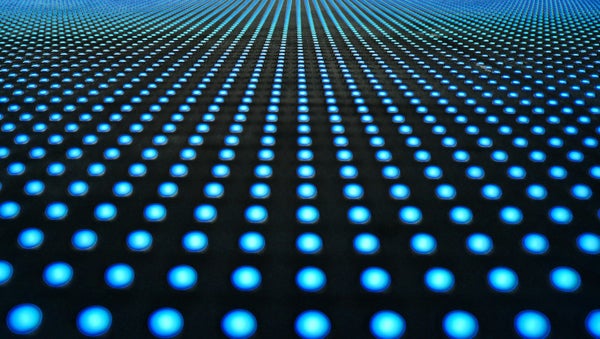The right paint can add pizazz to your walls—and now it can also make them smarter. Researchers recently converted a wall into an outsize trackpad and motion sensor by using low-cost conductive paint to create a large grid of electrodes.
Such a smart wall can sense human touch and track gestures from a short distance. It can also detect the locations of appliances and whether they are switched on. The technology could someday turn on lights when a person enters a room, track a player's motion in an interactive video game or monitor a child's television use. “Walls are everywhere, so why not turn them into sensors for smart homes?” says Yang Zhang, a computer science doctoral student at Carnegie Mellon University, who helped to develop the concept.
To create the high-tech surface, Zhang and his colleagues applied painter's tape in a lattice pattern to a 12-by-eight-foot wall, then coated it with commercially available conductive nickel paint. Removing the tape left a pattern of diamond-shaped electrodes, which the researchers connected using a grid of thin copper tape strips. They affixed a vinyl sticker in the middle of each diamond to insulate the electrodes from one another. Finally, they wired the strips to a custom-built circuit board and covered the wall with standard latex paint. The entire project took four hours and cost less than $200. In theory, Zhang says, “anyone can use the technique to make a wall smart.”
On supporting science journalism
If you're enjoying this article, consider supporting our award-winning journalism by subscribing. By purchasing a subscription you are helping to ensure the future of impactful stories about the discoveries and ideas shaping our world today.
.png?w=900)
Illustration by Brown Bird Design; Source: “Wall++: Room-Scale Interactive and Context-Aware Sensing,” by Yang Zhang et al. Presented at Chi Conference on Human Factors in Computing Systems, Montreal, April 21-26
In tracking a touch or gesture, the wall functions similarly to a smartphone screen. The circuit board prompts the electrodes to emit an electric field; when a person's body intercepts this field, it triggers a measurable change in current at the nearby electrodes. The user must be within three feet of the wall for it to work, however—a limitation the researchers are working to overcome.
In the wall's appliance-detection mode, the power is turned off, and the electrodes act as an antenna to passively pick up electromagnetic waves emitted by nearby devices. The researchers detected iPads up to 6.5 feet away from of the wall; fans and floor lamps could be sensed from about 10 feet. Zhang and his colleagues at Disney Research presented the wall in April at the CHI Conference on Human Factors in Computing Systems in Montreal.
Engineers have long dreamed of technologies that blend into our surroundings, says Christian Holz, a research scientist at Microsoft Research in Redmond, Wash., who was not involved in the work. A wall sensor is pervasive yet hides in plain sight, he notes: “It nicely questions our understanding of what a device might be and demonstrates how rich sensing technology can seamlessly integrate with everyday objects.”
